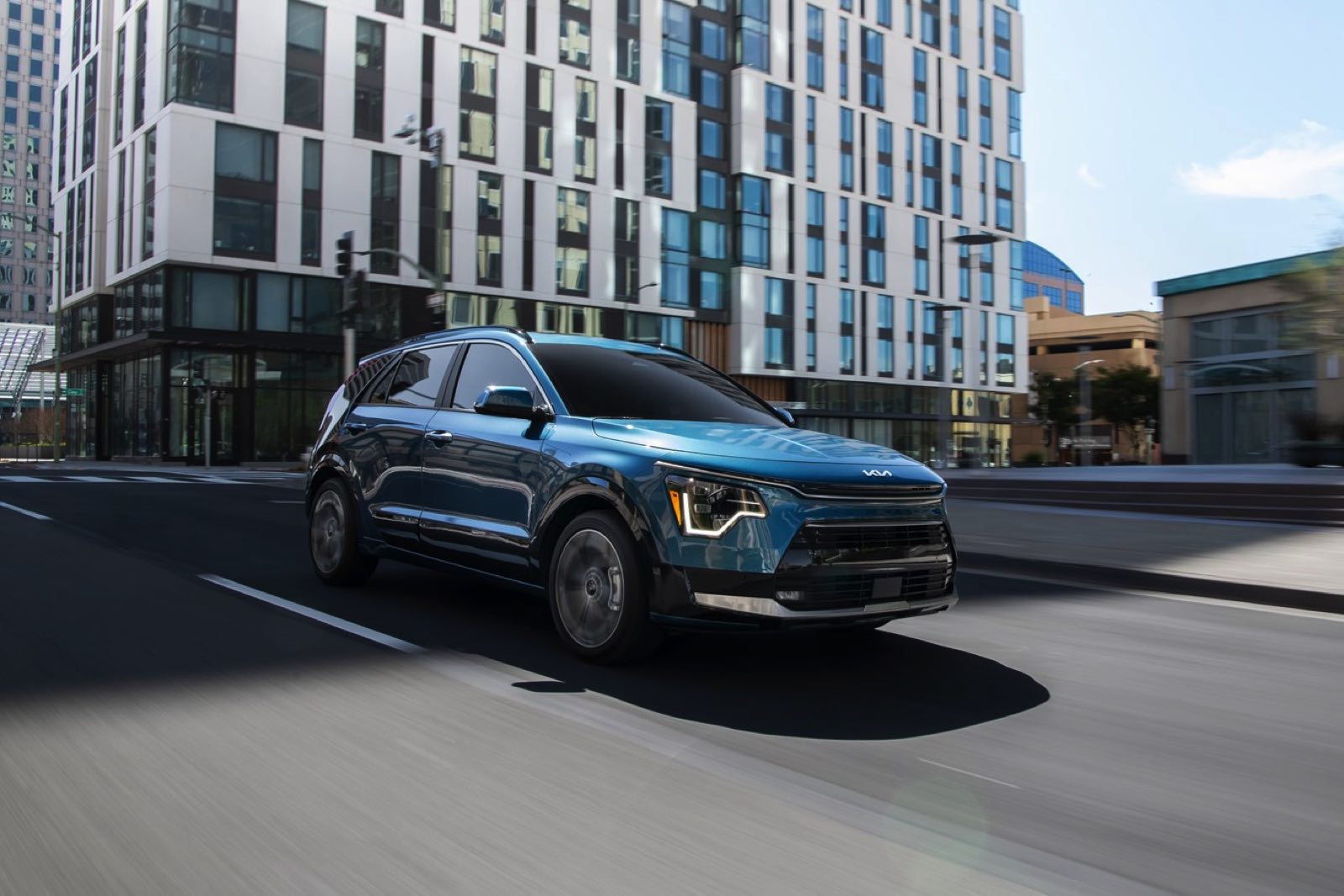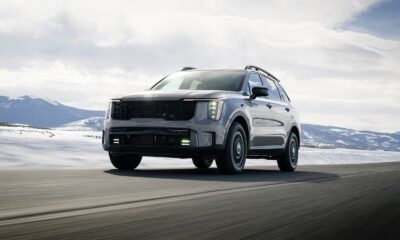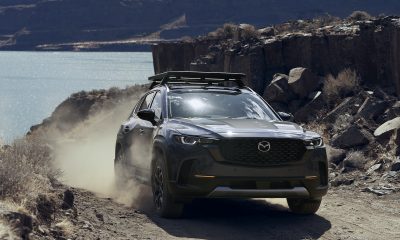Car Reviews
Kia’s Niro PHEV – PLUG-IN. BE HAPPY.
Kia’s Niro PHEV
PLUG-IN. BE HAPPY.
As the Earth’s hottest summer on record draws to a close, pollsters say most Americans believe climate change poses a threat to the nation’s well-being, but most have no idea what they can do about it.
The answer is in the driveway.
Climate is the product of a multitude of variables, and any number of humankind’s activities contribute. The single largest component, about one-fourth, is transportation, which is itself a broad term that encompasses diverse activities from airplanes to ships; yet there is room for one person to be effective. A diesel-powered heavy-duty pickup, for example, puts out particulate emissions equal to 50 midsize hybrid sedans, and an infinitely greater amount than an electric vehicle, which puts out none.
Across the planet, which this summer was 2 degrees F warmer than just 10 years ago, companies are investing billions of dollars to decarbonize transportation. Consider this: Four years ago, two electric-vehicle battery factories operated in the United States. Today, 30 are either planned, under construction, or operational.
The transformation to carbon-neutral cars, buses, and trucks may be underway, but these are the early years, and the rollout is uneven. That is an understatement, especially in the U.S., where the adoption rate of EVs climbed to 8.6%. In Europe, the rate is around 21% and in China, it is greater than 40%.
One can only speculate why Americans are reluctant to go electric, but from this often-biased viewpoint are visible at least five reasons: 1. They cost too much. Manufacturers cater to upscale buyers because they need to and that is where the money is. 2. Political spin: Blue states buy proportionally more EVs than red. 3. The charging network is spotty. Though stations are abundant in metropolitan areas, long-distance travel is problematic, especially in a nation as spread out as the United States. 4. That results in range anxiety. 5. They cost too much.
PHEV? Isn’t that candy?
Still, if the simple fact that our world is now two degrees warmer than it was a decade ago is worrisome (but you are not ready to go electric), think about a plug-in hybrid electric vehicle, such as the 2023 Kia Niro PHEV which graced our driveway this week.
Plug-in hybrid technology is a bridge between gasoline-powered cars and pure electric ones. It combines an internal combustion engine with an electric motor and a high-capacity battery. It is different from a regular hybrid, HEV, in that the battery is smaller and lighter and draws its power not from a parasitic relationship with the engine but from an external power source, such as a standard electrical outlet or a dedicated charging station. This feature enables the Kia Niro PHEV to operate in three distinct modes:
- All-Electric Mode: The vehicle runs solely on electric power, drawing energy from the battery. This is ideal for short trips and city driving, providing zero-emission transportation. Our Niro consistently delivered 26-30 miles of all-electric power. We plugged it in every night to an extension cord in the garage.
- Hybrid Mode: The internal combustion engine and electric motor work together to optimize fuel efficiency, especially during highway driving. The gasoline engine charges the battery, allowing the Niro PHEV to switch seamlessly between electric and hybrid. In this mode, the Niro PHEV delivers 46 mpg.
- Charging Mode: This mode allows the car to use the gasoline engine to charge the battery while driving, which increases the electric range on longer trips. In highway driving, even at Interstate speeds, our tester ran all-electric until the battery dropped to 25% charge. Then the engine cut in.
Here is the bottom line. No road trips were on the agenda this week, so about $5 worth of electricity powered all our 125 or so miles. For the week, the Niro delivered about 254 miles per gallon.
Yes, 254 mpg.
Of course, we had to rely on the trip computer. The gas gauge never dropped from full.
Comfortable, roomy
The Kia Niro PHEV impresses with its comfortable and well-appointed cabin. The interior materials are of superior quality, and the design is functional and modern. The seating is comfortable with ample legroom and headroom in both the front and rear.
Where the Niro PHEV shines is in its practicality. It offers a generous 19.4 cubic feet of cargo space behind the rear seats, which is expandable to 54.5 cubic feet with the rear seats folded down. This is more than most rivals in the compact SUV segment and makes the Niro PHEV an excellent choice for those who prioritize cargo capacity.
Ride and Handling
The Niro PHEV strikes a respectable balance between ride comfort and handling prowess. It provides a comfortable ride over most road surfaces, absorbing bumps and imperfections with ease. However, it may feel a bit soft for those who prefer a sportier driving experience.
In parking lots and on crowded streets, the Niro PHEV is predictable and easy to maneuver. Its electric power steering system is responsive, making it well-suited for urban driving and tight parking situations. While it may not offer the same level of excitement as competitors, it is composed and stable.
One drawback is that the Niro begins life as an economy car – the best hatchback around, according to Consumer Reports – and it permits a budget-car volume of road noise, even though the PHEV model carries a premium price.
Driver-Assist Technologies
Kia equips the Niro PHEV with a comprehensive suite of driver-assist technologies, including adaptive cruise control, lane-keeping assist, blind-spot monitoring, and automatic emergency braking. These features enhance safety and convenience, making the Niro PHEV a strong contender in its class.
The best part of this story is that it is a Kia, so all the digital technology works well. The Niro keeps itself nicely balanced in its lane and follows other vehicles at safe distances.
Price and Warranty
One of the Kia Niro PHEV’s most compelling strengths is its competitive pricing. Kia prides itself on winning the value equation, and the Niro PHEV is no exception. It starts at $33,840. It only has two chief competitors, the Ford Escape PHEV, starting at $36,950, and the Toyota RAV4 Prime, starting at $41,635.
Of the three, only the Escape is American-made and, thus, eligible for up to $7,500 in federal income tax credits, but good luck getting one. Beautiful Bride and I placed an order nine months ago and have yet to hear back from the factory. We finally canceled the order, but do not tell Ford. Our dealer, McClarty Ford, says it will sell it to someone.
Kia offers an industry-leading warranty package. The Niro PHEV comes with a 10-year/100,000-mile powertrain warranty, a 5-year/60,000-mile basic warranty, and a 10-year/100,000-mile hybrid system warranty.
If we were interested in leasing, we could still get the income tax credit on the Kia, but we seldom put on more than 5,000 miles a year (living close to work and essential services is another great way to protect the environment). We expect cars to last 10 or more years, so leasing is not an option.
A top-of-the-line Niro sells for $41,635, delivered. It is a wonderful car with gobs of desirable features. Still, that is too high for what is fundamentally a budget car.
But I repeat myself.




































